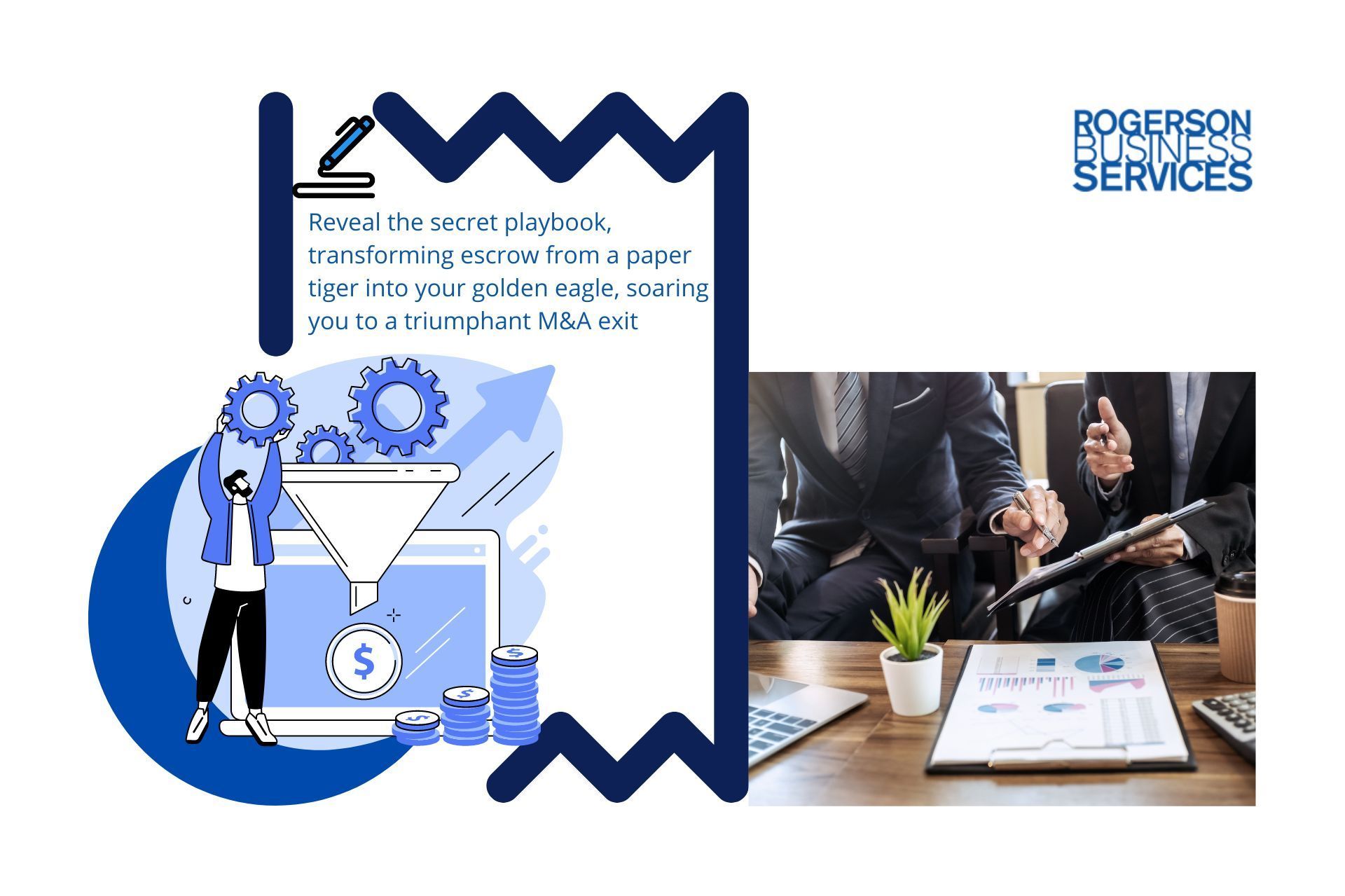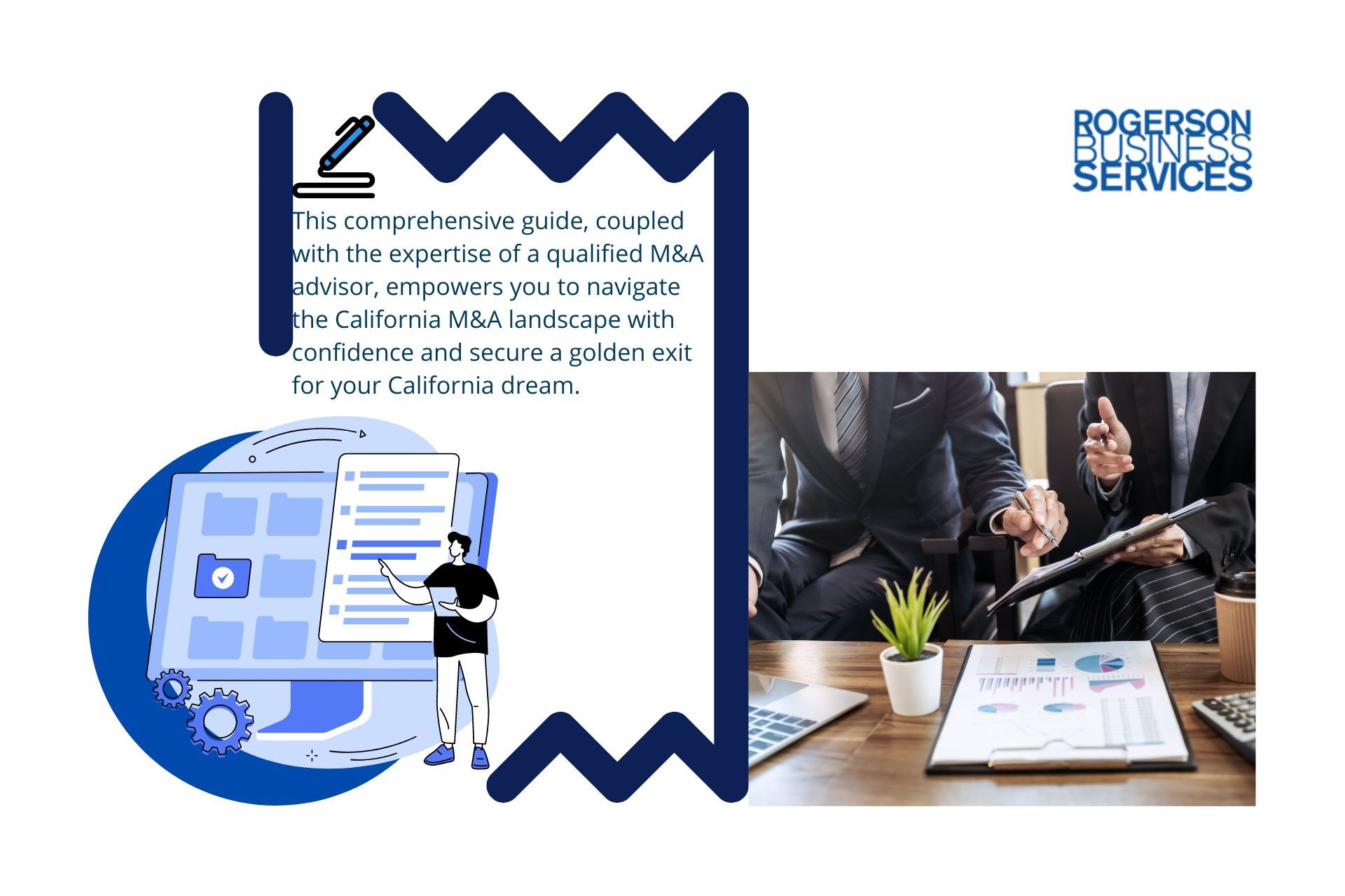3 Phases to Successfully Win a Sell-Side M&A Process
Sell-Side M&A Process

It’s not uncommon for private business owners to think about selling. It’s something every company head, at different times, is forced to consider. The years of hard work are paying off, so maybe it’s time to start a new project that is more enjoyable than the grind of owning and running a business or enjoy some time off.
Selling your private business for a fair price is different than putting a home or vehicle on the market. Winning a sell-side M&A process often requires the help of a certified M&A Advisor. There are fees to calculate, and you also need to know how much your business is worth.
In this article, you’ll learn the three phases necessary to achieve a successful sell-side M&A transaction.
M&A Process
The goal of a successful sell-side M&A transaction is for an interested buyer to acquire your business through negotiations that benefit both sides.
1. Phase One: Ready the Business for Sale
Just like getting a home ready for interested buyers, the same applies to your business. You need to get your business ready for sale. It also helps if you have someone to assist like Andrew Rogerson, an M&A Advisor.
What is an M&A Advisor? Selling your business is complicated and has many nuances, whether it’s a local, regional, state, national or global sale. I’m currently working on a difficult transaction. One day the buyer was clear with their offer, including their finance. Two days later, their finance was no longer available. So, the lender offered new suggestions to close the sale.
This made the sellers very annoyed for a couple of days, so a ‘time out’ was required to regroup. The seller then had negative news, which frustrated the buyer, so another couple of days were lost. Both parties are still willing to do a deal, which means managing and riding these ups and downs. A sale may eventuate or may be lost altogether due to these many nuances.
So, an M&A Advisor is someone that will guide you through the sale of your business by building a structured process that creates a timed and competitive market that optimizes the company’s business value.
Sell-Side M&A Strategy
As you’re building a sell-side M&A strategy, there are five questions to answer.
- Think about who is the best buyer for your business. Consider what you want in the person that will own and operate your company.
- What steps do you need to take to sell your company for its highest value?
- Do not consider taking any shortcuts during the sell-side M&A process. What risks should you manage that may negatively affect the sale?
- How do you find a buyer? Does scope or scale matter?
- When do you want the deal finalized? Is it possible to time the market for the best price?
- Learn more about how Rogerson Business Services market and attract qualified buyers to your business for sale listing.
Document Collection and Compiling Process
You want to quickly maximize the company’s value without disrupting the business. Potential buyers need to see a business with potential that also runs smoothly. It’s when mid-market M&A Advisors come in. Middle-market Advisors will help lead the valuation and selling process go quickly if this is what the seller and buyer wish to do.
Along with a CIM, there are other documents needed to sell a business.
What is a CIM? A Confidential Information Memorandum (CIM) or also called a Confidential Business Review or CBR, is what the side-sell M&A process leads with. A CIM is a detailed declaration about who the seller is, what is for sale, the price, and essential disclosures a seller wishes to make. It is CRITICAL that the CIM is only shared with a qualified buyer after they sign an NDA or Non-Disclosure Agreement.
A quality CIM should also show a prospective buyer the reason for the sale and the business's potential.
As we mentioned above, the CIM should only be shared with a buyer once they sign a Non Disclosure Agreement (NDA). To provide initial information so a buyer will read and sign the NDA, you also need to create a teaser or one-page executive summary of the business.
2. Phase Two: Reaching out to qualified and motivated buyers
Hanging a “Business For Sale” sign isn’t an effective way to look for a qualified and more importantly, motivated buyer. You need to take a different approach for a successful lower-middle market M&A.
Approach and Contact Buyer List
Through the use of thorough research, create a buyer’s list with an M&A Advisory firm, so you know who you need to contact. It should include:
- Strategic buyers. Strategic Buyers are usually businesses or companies in the same industry. Some buyers may have made previous inquiries about purchasing the business. These buyers look for synergies with their business and adding it to your business, so it makes both entities stronger when buying, bidding for new contracts, and presenting a stronger brand.
- Private Equity Groups (PEGs.) PEG’s are private companies that receive funding/capital from different sources and want to invest those funds by owning 50% to 100% of a company. Some PEGs are willing to have the seller keep a minority of shares but be careful with this model as it means the PEG has control of the business.
- Family Offices. Family offices manage investment portfolios for wealthy families and often purchase profitable businesses. Unlike PEGs, Family Offices do not have investors, so are not pushed to sell the company for a profit in a short timeframe.
Receive Primary Bidding
After approaching and contacting potential buyers, expect questions and lots of questions. Before you answer those questions, require the buyer to complete a Non-Disclosure Agreement and ask about their cash position and their ability to obtain finance.
Meet With Motivated and Serious Bidders
As your time is your most important asset, narrow down the buyers you are willing to spend time with and answer all their questions. If you are using the services of an M&A Advisor, they will manage all this for you so you can focus on what is the most important; running your business.
Receive the LOI
A critical step once you have a qualified and motivated buyer is receiving an LOI (Letter Of Intent.) It indicates the mergers and acquisition process is heading to a new stage and often a stressful stage as it shows that both buyer and seller have the potential to do a deal; if all goes well. Of course, deal-making is full of ups and downs and so very little ever goes well.
The purpose of an
LOI is to outline the terms, along with what the buyer is willing to offer to buy your business. It is an offer, but it is not legally binding.
3. Phase Three: Kick-off Negotiations
If the LOI is reasonable, the critical next step is to start the negotiations with the interested buyer. Be prepared for anywhere from a couple of negotiations to multiple negotiations. The higher the number of items to negotiate and the depth of differences between the LOI and what the seller was requesting increases the chances of the deal not being acceptable to one or both parties.
The goal of the negotiations is for both parties to be comfortable. There was a ‘meeting of the minds’ as much as possible, knowing that it's never one party winning all the negotiations. That is, you may not get everything you want, but it is a sound M&A exit strategy.
Draft the Definitive Purchase Agreement
What is a Definitive Purchase Agreement (DPA)? It is a legally binding document that lists all of the terms and conditions included in the sale. It should always be drafted by a qualified attorney that is licensed to practice law in the US State where the business is located.
Once it is signed, the buyer is the legal owner of the company.
Representations and warranties are a critical part of the DPA. The buyer and seller both state facts called representations that are warranted to be true. It is the longest part of the agreement and usually takes extensive negotiations.
There are also closing conditions that include the buyer ensuring the reps and warranties section is accurate. A final negotiation on how the reps and warranties are classified can also occur at this stage.
Buy-Side Due Diligence
It’s not legally required, but every buyer will want to do this. An organized buyer will have a checklist of items they wish to review before making any financial deposit into the acquisition. They will also likely request all company-related documents and more.
Solicit Final Approval From All Owners and Board Members
Not every private business has multiple owners or a board of investors. If you are the sole proprietor, you do not need additional approval to finalize the sale of the company.
When there are multiple owners, each one must agree to the terms of the sale. All signatures may need to be on the Definitive Purchase Agreement or a document prepared by the attorney for the sellers.
Sign the Definitive Purchase Agreement
After lengthy negotiations before and during the creation of the Definitive Purchase Agreement, it’s finally time to sign the document. If you are selling a business in California, there will be license checks, State and Federal government clearances, and more.
A licensed California escrow company typically does these services as their role is to protect all the parties in the transaction with the handling of money, the necessary State and Federal approvals, and many other items necessary to navigate so the final sale of the business can be done.
Ready to Make a Deal? Choose RBS Mid-Market Advisory Firm for Trust, Service, and Accuracy
At Rogerson Business Services, we help business owners to value and sell their lower middle-market company in California with a solid exit plan ready for M&A. Our deal team includes Legal Experts, CPAs, Tax Experts, Financial Planners, and M&A Advisors. We are here to make the sell-side M&A process a successful one for you and your company.
If you are a retiring business owner looking to exit your lower middle market business in California, here are five tips to get you started:
1. Don't wait until the last minute to start planning your exit. The process of selling a lower middle market business can take a long time, so it's important to start early.
2. Have a clear idea of what you want to get out of the sale. Know your goals and what you're willing to negotiate.
3. Choose the right type of buyer. Not all buyers are created equal, so do your research and find the right one for your business.
4. Be prepared for a lot of due diligence. M&A buy-side due diligence is when buyers will want to know everything about your business, so be ready to provide documentation and answer questions.
5. Be flexible with the terms and conditions of the deal. It's important to be open to negotiation to get the best possible deal for your business.
Rogerson Business Services, also known as, California's lower middle market business broker is a sell-side M&A advisory firm that has closed hundreds of lower middle-market deals in California. We are dedicated to helping our clients maximize value and achieve their desired outcomes.
We have a deep understanding of the Californian market and an extensive network of buyers, which allows us to get the best possible price for our clients. We also provide comprehensive support throughout the entire process, from initial valuation to post-closing integration.
Our hands-on approach and commitment to our client's success set us apart from other firms in the industry. If you consider selling your lower middle market business, we would be honored to help you navigate the process and realize your goals.
If you have decided to value and then sell your lower middle market business or still not ready, get started here, or call toll-free 1-844-414-9600and leave a voice message with your question and get it answered within 24 hours. The deal team is spearheaded by Andrew Rogerson, Certified M&A Advisor, he will personally review and understand your pain point/s and prioritize your inquiry with Rogerson Business Services, RBS Advisors.
This is part of M&A Advisory tips to answer some frequently asked questions about Sell-Side M&A series ->
Have Questions? We've Got Answers
We will get back to you as soon as possible.
Please try again later.
Hey there! Can we send you a gift?
We just wanted to say hi and thanks for stopping by our little corner of the web. :) we'd love to offer you a cup of coffee/tea, but, alas, this is the Internet.
However, we think you'll love our email newsletter about building value and properly position your company before transition/exit your business ownership.
As a special welcome gift for subscribing, you'll also get our helping and educational guides, tips, tutorials, etc.. for free.
It's filled with the best practices for retiring serial business owners like Dan Gilbert, Larry Ellison, Warren Buffett, and many more.
Just sign up for our emails below.
Sign up to our MMB newsletter
Thank you for joining us.
Check your email for our monthly newsletter
Please try again later
Reach out to any of our Deal Team & Advisors for a confidential conversation to see if we are a good fit.
We Help You Maximize The Value Of Your Business Before Selling it
Toll-Free
(844) 414-9600
5150 Fair Oaks Blvd, #101-198
Carmichael, CA, 95608
CA DRE# 01861204
Rogerson Business Services - Lower Middle Market Advisory
Read our Privacy Policy
M&A Knowledge Hub


